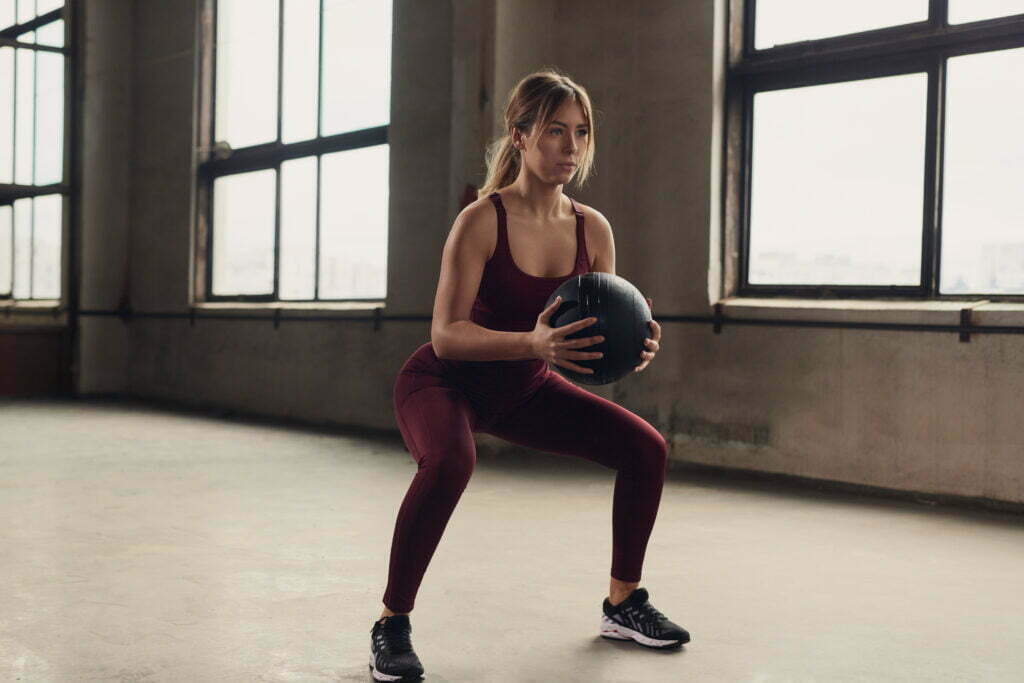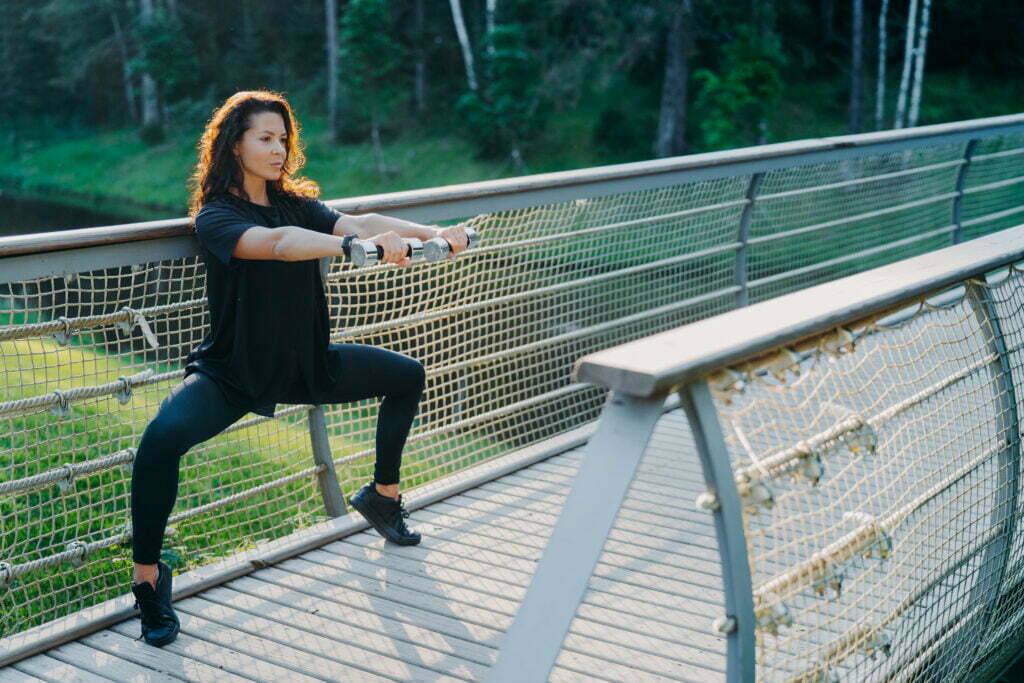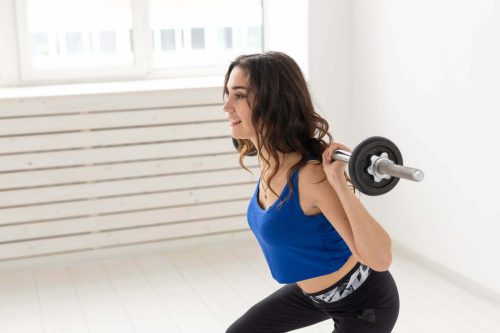Lateral squats are a type of exercise that targets the muscles in the hips and legs. They involve performing a squat movement while stepping out to the side instead of straight forward or backward. Lateral squats can be a beneficial addition to any workout routine, as they offer a number of benefits that can help improve overall fitness and performance.

 4.7
4.7
Would you like to receive information about the operations from Vanity Doctors?
As Vanity, we can give you information about the operation you are considering.
Ask the DoctorIn this blog post, we will delve into what Lateral squats work, what type of exercise they are, and the differences between Lateral squats and lateral lunges. By the end, you will have a better understanding of how Lateral squats can be incorporated into your fitness routine and the benefits they offer.
What Does Lateral Squat Work?

Lateral squats work the muscles in the hips, thighs, and buttocks, with a focus on the outer hip muscles, or abductors. These muscles are responsible for moving the leg away from the midline of the body, and they play a crucial role in activities like walking, running, and climbing stairs.
1. Side To Side Squat
Lateral squats, also known as side-to-side squats or side squats, are a type of exercise that targets the muscles in the hips and legs. They involve performing a squat movement while stepping out to the side instead of straight forward or backward. Lateral squats can be performed using body weight or with the addition of equipment such as dumbbells or a barbell.
2. Side Squat
One variation of Lateral squats is the lateral squat walk, which involves performing a series of Lateral squats in a row while walking in a lateral direction. This can be a great way to add an element of cardiovascular endurance to the exercise, as well as challenge balance and coordination.
Incorporating Lateral squats into your fitness routine can help improve balance, coordination, mobility, and muscle strength in the lower body. They are a functional exercise that can mimic real-life movements and improve overall movement patterns, making them especially useful for athletes or individuals who want to improve their physical performance.
What Type Of Exercise Is Lateral Squat?
Lateral squats are a type of functional exercise, which means they are designed to mimic real-life movements and improve overall movement patterns. Functional exercises are often used in rehabilitation settings to help individuals regain strength and mobility after an injury, but they can also be incorporated into any fitness routine to improve balance, coordination, and overall athleticism.
Lateral Split Squat
The lateral split squat involves stepping out to the side and lowering down into a lunge position before returning to a standing position. Lateral split squat targets the quadriceps, hamstrings, and abductors, as well as the muscles in the lower back and core.
1. Lateral Box Squat
Lateral box squat involves performing a lateral squat while sitting back onto a box or bench. Lateral box squat can help improve strength and power in the lower body, as well as improve mobility and flexibility in the hips and legs.
2. Lateral Squat Walk
Lateral squats work the muscles in the hips, thighs, and buttocks, with a focus on the outer hip muscles, or abductors. These muscles are responsible for moving the leg away from the midline of the body and play a crucial role in activities like walking, running, and climbing stairs. In addition to working the abductors, Lateral squats also engage the quadriceps and hamstrings, as well as the muscles in the lower back and core.
Lateral squats are also classified as a lower body strength exercise, as they challenge the muscles in the legs and hips to work against resistance. This can be achieved using bodyweight, dumbbells, or other types of equipment, such as a barbell or kettlebell.
What Is The Difference Between Lateral Squat And Lateral Lunge?

Lateral squats and lateral lunges are both exercises that involve stepping out to the side and squatting down, but there are some key differences between the two.
One of the main differences between Lateral squats and lateral lunges is the range of motion. involve Lateral squats a smaller range of motion, as the focus is on the abductor muscles and the hips. Lateral lunges, on the other hand, involve a greater range of motion, as they involve stepping out and lowering the body down until the thigh is parallel to the ground.
Another difference between Lateral squats and lateral lunges is the position of the feet. In a lateral squat, the feet remain close together and do not move, while in a lateral lunge, the feet are positioned wider apart and one foot moves out to the side.
Finally, the muscles that are targeted in each exercise are slightly different. Lateral squats primarily work the abductors, quadriceps, and hamstrings, while lateral lunges target the quadriceps and hip flexors in addition to the abductors.
Benefits of Lateral Squat
Now that we’ve covered what Lateral squats are and how they differ from lateral lunges, let’s take a look at the benefits of incorporating this exercise into your fitness routine.
3. Improved Balance And Coordination
Lateral squats require balance and coordination, as you need to maintain control of your body while stepping out to the side and lowering down into a squat position. By performing this exercise regularly, you can improve your balance and coordination, which can help you move more efficiently in daily activities and sports.
4. Enhanced Mobility And Flexibility
Lateral squats can also help improve mobility and flexibility in the hips and legs. By stepping out to the side and lowering down into a squat position, you are stretching and activating the muscles in the hips and thighs, which can help improve range of motion and flexibility. This is especially beneficial for individuals who sit for long periods of time or engage in activities that involve repetitive movements, as these can lead to tightness and stiffness in the hips and legs.
5. Increased Muscle Strength and Endurance
Lateral squats are an excellent exercise for building strength and endurance in the lower body. By challenging the muscles in the hips, thighs, and buttocks to work against resistance, you can build muscle and improve overall strength and power. This can be especially useful for athletes who need to generate force and power during explosive movements, such as jumping or sprinting.
6. Improved Functional Movement Patterns
As mentioned earlier, Lateral squats are a functional exercise, which means they mimic real-life movements and can help improve overall movement patterns. By practicing Lateral squats, you can improve your ability to move efficiently and effectively in everyday activities, such as walking, climbing stairs, and picking up objects.
7. Enhanced Athletic Performance
Incorporating Lateral squats into your fitness routine can also help improve athletic performance. By building strength and power in the lower body, you can improve your speed, agility, and overall performance in sports and other physical activities.
Conclusion
Lateral squats are a beneficial exercise that can be incorporated into any fitness routine to improve balance, coordination, mobility, and muscle strength. They are functional exercise that mimics real-life movements and can help improve overall movement patterns, making them especially useful for athletes or individuals who want to improve their physical performance. By understanding the differences between Lateral squats and lateral lunges, you can choose the right exercise for your fitness goals and see the benefits of Lateral squats in your own training.
By making a lateral squad, you can make your hips look like a beautiful brazilian butt, or you can achieve this with brazilian butt lift operation. Vanity Cosmetic Surgery Hospital offers you the best surgeons in this regard.





